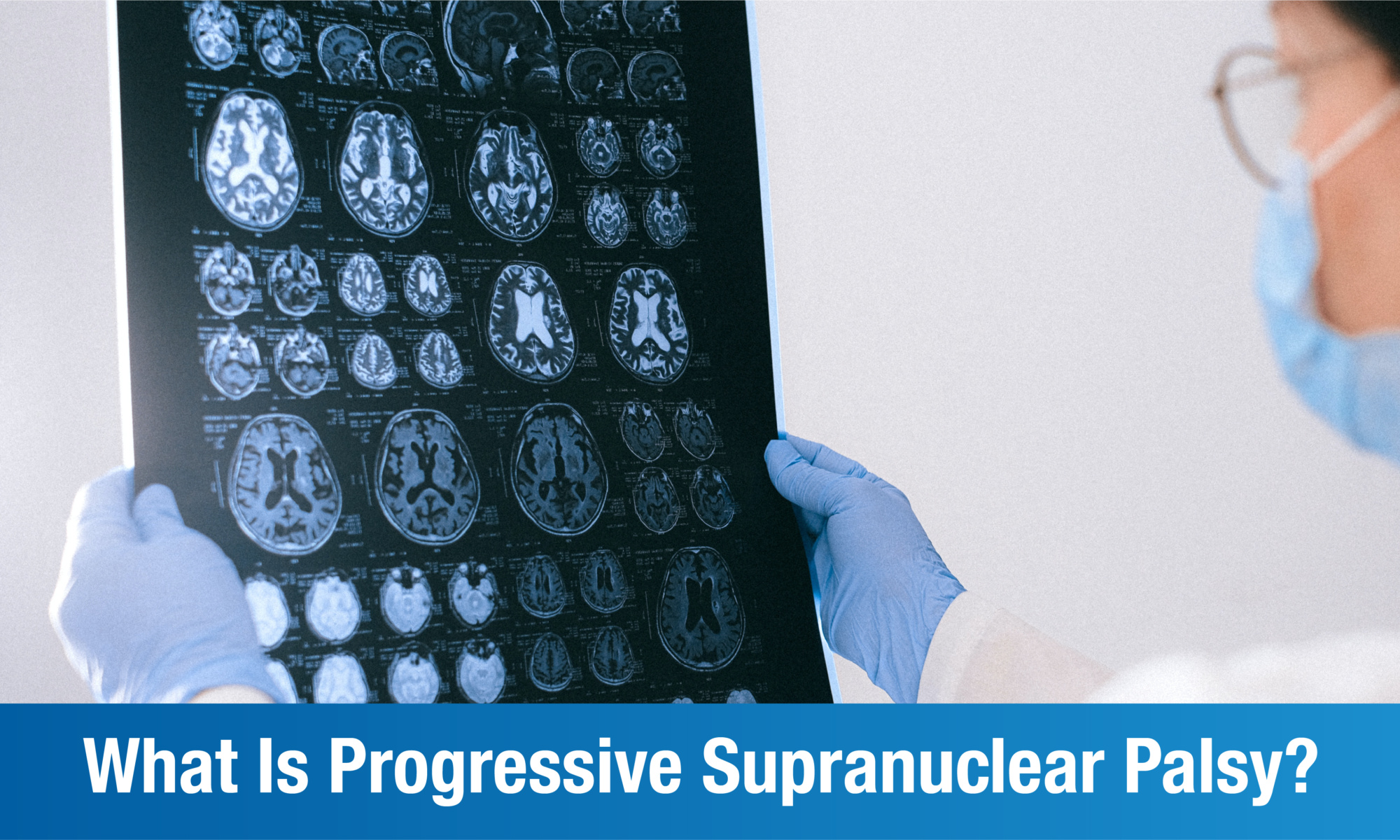
In the realm of neurological disorders, there exist conditions that challenge our understanding of the human brain and the intricate machinery of our bodies. Progressive Supranuclear Palsy, often abbreviated as PSP, is one such enigma. It’s a rare and relentlessly progressive disorder that strikes at the core of our motor and cognitive functions, presenting a daunting puzzle to both researchers and those affected by it.
Here, we offer a quick guide on everything you need to know about the stages of Progressive Supranuclear Palsy and how you can manage the progression of this condition.
Understanding Progressive Supranuclear Palsy
Progressive Supranuclear Palsy (PSP) is an uncommon brain disease that significantly impacts your motor control. People with this condition face serious problems with walking, proprioception (coordination and balance), eye-movement, and swallowing.
PSP is a rare neurodegenerative condition that affects people over the age of 60 and occurs due to progressive damage in the brain cells that are located just above the nerves, controlling eye movement. Brain damage occurs due to the abnormal build-up of a protein called tau, which cannot be broken down properly by the patient’s brain. It is a progressive disease that invariably leads to life-long and life-threatening complications such as pneumonia and dysphagia (difficulty swallowing).
While PSP can be linked to certain genes, it is not a hereditary condition.
Symptoms of Progressive Supranuclear Palsy
Progressive Supranuclear Palsy symptoms are very similar to several other known conditions, and it is therefore easy to misdiagnose. The symptoms develop gradually at first, and then progress faster. Some of the common symptoms that patients may notice include:
- Muscle stiffness
- Problems with balance and movement (a heightened tendency to fall)
- Sudden mood changes
- Fatigue
- Slow, slurred speech
- Softened voice
- Difficulty controlling eye and eyelid movement (especially looking downward)
- Blurry or double vision
- Sudden aversion to bright lights
- Difficulties with thought and memory
- Recklessness or poor judgement
- Impulsive acts like crying or laughing without cause
- Trouble swallowing (Dysphagia)
- Insomnia
- Varying between being overtly expressive and expressionless
- Having trouble finding the right word while speaking
Progressive Supranuclear Palsy Stages
Like many progressive conditions, PSP is often categorised into stages to help describe its progression. The course of the disease can vary from person to person. Let’s look at the 4 stages of PSP below:
Early Stage of PSP
- Symptoms may be subtle and easily overlooked.
- Common early signs include:
- Mild balance problems
- Frequent falls
- Changes in eye movements (difficulty controlling eye movement)
- Some individuals may also experience mood changes and mild cognitive difficulties.
Despite these symptoms, people in this stage often remain largely independent in their daily activities.
Mid-Stage of PSP
- Symptoms become more pronounced and begin to significantly impact daily life.
- Balance problems become more evident, leading to frequent falls.
- There is a notable decline in eye movement control, which can affect reading and driving.
- Muscle stiffness (rigidity) and slowness of movement (bradykinesia) become more prominent.
- Communication difficulties, such as slurred speech, may develop.
- Cognitive changes, including problems with memory and thinking, become more apparent.
Advanced Stage of PSP
- Patients experience severe impairments in motor function and cognition.
- There is a marked loss of balance and mobility, often requiring a wheelchair or assistance for mobility.
- Swallowing difficulties (dysphagia) can lead to a risk of choking and aspiration pneumonia.
- Speech may be severely affected, and communication becomes challenging.
- Cognitive impairments, including severe memory deficits and executive function problems, are common.
- Personality changes, emotional lability, and behavioral disturbances may occur.
- Patients typically require extensive care and assistance with daily activities.
End-Stage of PSP
- The end stage of PSP is characterised by profound disability and a high level of dependence on caregivers.
- Individuals may become bedridden and lose the ability to communicate effectively.
- Swallowing difficulties worsen, increasing the risk of complications.
- Eye movements may be severely impaired.
- Respiratory problems may arise, increasing the risk of pneumonia and other respiratory infections.
- Care is primarily focused on providing comfort and support, as there is no cure for PSP.
Progressive Supranuclear Palsy vs Parkinson’s Disease
PSP is often referred to as “Parkinson’s Plus” due to the overlap in symptoms with Parkinson’s disease. However, it is far from a mere variant. PSP is characterised by the accumulation of abnormal protein aggregates in the brain, affecting movement control, balance, and even eye movements, setting it apart with its distinct set of challenges.
You can read more about the difference between PSP and Parkinson’s Disease here.
Diagnosing Progressive Supranuclear Palsy
Given the similarity PSP shares with other conditions, including Parkinson’s, it can take a while to get a definitive diagnosis. Typically, doctors will conduct a brain scan (such as MRI or PET) to check for the build-up of the tau protein. They also conduct cognitive tests to assess thinking, learning, and memory abilities. The doctor will usually call in a neurologist with expertise in PSP to ask patients several questions about their symptoms. These questions attempt to discover whether patients are experiencing mood swings, loss of interest in things they once liked, change in their sleeping patterns, whether they have been falling more often, or experiencing muscle stiffness.
Treatment for Progressive Supranuclear Palsy
Typically, several therapists and healthcare professionals will work together to create a tailored treatment plan for the patient. The common components of a PSP treatment plan include:
- Medication — Medication may be prescribed to help control your muscle movement. However the effects of these are limited and temporary, usually lasting only two to three years. Antidepressants might also be prescribed to combat the depression and sleep problems that often accompany PSP. Some of the medications used by Parkinson’s Disease patients may also help.
- Physiotherapy — You will be given exercises that help you strengthen your muscles and help you regain a little control over your movements. A physiotherapist can also advise you on specialised equipment such as walking frames to improve balance or special shoes to help prevent slippage
- Speech and Language Therapy — This helps to train the muscles in the tongue and mouth for safe chewing and swallowing, as well as clearer verbal articulation.
- Occupational Therapy — This focuses on enabling the patient to do daily tasks like eating and bathing independently. In addition to tailored exercises, this can also involve teaching the patient how to use assistive devices, making recommendations on home safety — such as adding grab rails.
- Dietary Changes — You may be referred to a dietician who can help you maintain a healthy diet while finding foods and liquids that are easier to swallow. In later stages of the condition, the doctor may prescribe feeding tubes to help with swallowing.
- Eye Care — Loss of control over the eyelids may be treated with small amounts of Botox injected around the eyelid. Botox can help block the muscle spasms in the area. An ophthalmologist may also suggest bifocals or prism lenses to help with downward eye movement
- Stem Cell Therapy — Autologous stem cell therapy for PSP can help treat the disorder at its root cause. Stem cells, which can take on the function of any cell and can accelerate healing at the cellular level, are extracted from the patient’s bone marrow, developed, and then injected intravenously. They can help rebuild degenerated brain cells and improve the overall functioning of the patient
FAQs
Is PSP worse than Parkinson’s?
While there are several similarities between PSP and Parkinson’s, PSP generally progresses much faster and doesn’t respond as well to treatment as Parkinson’s.
Is PSP a terminal illness?
PSP itself is not fatal. However, it results in complications such as Pneumonia and fall-related injuries that can be fatal.
Does PSP run in families?
Although the genetic cause of Progressive Supranuclear Palsy is unknown in most cases, it can sometimes run in the family.
Does PSP cause Dementia?
Yes, dementia is one of the multiple cognitive problems a patient with PSP may experience.
How quickly does PSP progress?
Most cases of PSP progress over five to seven years from the time of diagnosis.
Do PSP patients sleep a lot?
On the contrary, insomnia is a common PSP symptom.
How long can a person live with Progressive Supranuclear Palsy?
The average life expectancy of a patient with progressive supranuclear palsy is about six to seven years from the diagnosis.
What is the difference between Parkinson\’s and Progressive Supranuclear Palsy?
PSP is a Parkinsonian disease — this means that there are several symptoms in common between PSP and Parkinson’s. However, PSP progresses much faster than Parkinson’s. In addition, PSP patients usually don’t exhibit tremors, which Parkinson’s patients nearly always do.
Is Lewy Body Dementia the same as PSP?
PSP and Lewy Body Dementia are both types of Non-Alzheimer’s Dementia. However, Lewy Bodies are detected in only about a tenth of PSP cases.
Can PSP cause Strokes?
PSP patients may have strokes, but it is very rare.
Is PSP similar to ALS?
PSP, like ALS, is a rare disease which is also progressive. Both diseases gradually weaken the ability to move voluntarily and cause slurring of speech and trouble swallowing.
What part of the brain is affected by PSP?
PSP affects multiple parts of the brain, including the substantia nigra, basal ganglia, pars reticulata, and subthalamic nucleus. All of these affect voluntary movement, coordination, eye movement, and swallowing.










